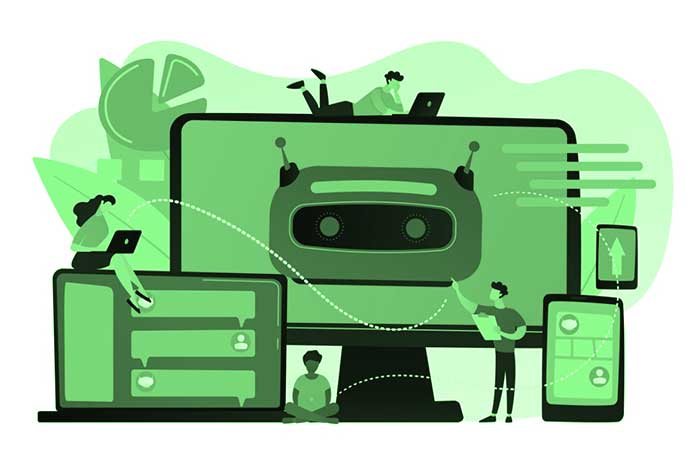Generative AI is often used for data augmentation, adding new data to existing data sets to improve the performance of machine learning models. At the core of this process is natural language processing, a means for artificial intelligence to decipher everything from our query language in apps or search engines to thousands of form inputs gathered in aggregate.
Data augmentation can be used to improve the accuracy of predictions as well as to reduce the too perfectly matching its training data, making new insights harder to uncover, a phenomena known as “overfitting.” In other words, it involves the creation of data that is realistic and human-like, as opposed to machine-like. This can be achieved through image, video and text generation tasks.
Chai Research, a start-up founded by a team of five colleagues who all met at the University of Cambridge, has developed an interactive chatbot platform with 100,000 daily users. Chai Research’s “Chai.ai mobile app” allows users to play with a powerful new class of machine learning models capable of writing, drawing, and creating with credible, sometimes superhuman results.
How does generative AI work?
Generative AI has several potential applications, such as data augmentation, creating synthetic training data, image generation, text generation and voice synthesis. Its two main types, GANs (generative adversarial networks) and VAEs (variational autoencoders). GANs generate new data, like training data, while VAEs generate new data from latent space, work to classify and assess data or extrapolate data that fills in gaps.
The benefits of generative AI
Generative AI can offer several benefits, including creating more realistic simulations, and more accurate models, improving decision-making, and generating new ideas and solutions to social and economic problems. Creating more realistic simulations is one of the critical benefits of generative AI. Simulations are often used in medicine, engineering, and climate science. By making simulations more realistic, we can better understand complex systems and make better predictions about future events.
Generative AI can generate new ideas and solutions to social and economic problems. For example, if we want to find a way to reduce poverty in a specific area, we can use generative AI to generate a list of potential solutions. This will help us narrow our options and choose the best action.
Making information more appealing can spark curiosity and innovation.
When making information more appealing, a few things can be done to increase engagement and curiosity. For one, adding visuals can help to make data more digestible and memorable. Chai Research is capturing user interest through a more engaged information flow: The chatbot. To log in and converse with a digital “friend” who can read and source information faster than any human makes curiosity and asking questions a more enticing endeavor. What’s more, as we work with these artificial intelligence tools, they start to learn our voice through our queries and how we engage. This gives users a way to seek and manage information in the ways they understand it best.
And the information we source can be more valuable, faster. Machine learning through natural language processing can help streamline the process of making information more appealing. By analyzing data on what types of content are most popular, machine learning algorithms can help identify patterns and trends. This can save time by allowing content creators to focus on creating the types of content that are most likely to be successful. Additionally, machine learning can curate content from various sources, which can help provide a broad range of perspectives on a given topic.
Open-source AI and its cohort
Open-source AI is revolutionizing how computers interact with humans. AI technology is used in various ways, including robotics, machine learning, and natural language processing. AI technology also creates virtual and digital assistants like Apple’s Siri and Amazon’s Alexa.
AI technology automates tedious and time-consuming tasks like data entry and customer service. AI technology is also used to develop more efficient and accurate medical diagnoses and treatments. Open-source AI is also used in various industries, such as healthcare and finance, to create autonomous vehicles and robots. Autonomous vehicles can navigate without human input, and robots can be programmed to perform various tasks. AI technology is also being used to create self-driving cars and drones.
Unlike many other scientific or research endeavors, open-source AI is made available to everyone through platforms and aps, encouraging constant development and innovation in the process at little to no expense to users, developers and researchers. Harnessing the immense power of generative AI and sharing it widely welcomes the naturally iterative process of machine learning and businesses that encourage user development will more quickly establish new uses for the technology.
The future of generative AI
As generative AI becomes more sophisticated, it can handle more complex tasks. For example, it could be used to create websites or write research papers. Additionally, the technology could improve decision-making and generate new ideas and solutions to social and economic problems.
The future of generative AI looks promising, with the technology expected to grow in popularity and become more sophisticated. Generative AI has the potential to revolutionize many industries and aspects of society but faces challenges such as the data intensity of its models and the difficulty in interpretation that often arises.
Also Read: Impact Of Artificial Intelligence On Work, BCG Data

